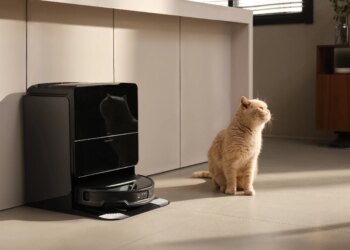Select Language:
Understanding the Typical Desktop Computer
In the age of rapid technological advancement, desktop computers remain a staple in both personal and professional environments. While many users are now gravitating towards laptops and tablets for their portability, the traditional desktop model continues to offer a blend of performance, upgradeability, and ergonomics that many find appealing.
Key Components of a Desktop Computer
A typical desktop computer consists of several essential components that work together to perform a wide range of tasks. Understanding these components can help users make more informed decisions when purchasing or upgrading a system.
1. Central Processing Unit (CPU)
- Acts as the brain of the computer.
- Processes instructions and executes tasks.
- Common manufacturers include Intel and AMD.
2. Motherboard
- The main circuit board that connects all components.
- Provides slots for the CPU, RAM, and expansion cards.
- Contains integrated ports for peripherals and storage.
3. Random Access Memory (RAM)
- Temporary storage for data currently in use.
- Affects the system’s multitasking capabilities and speed.
- Typically ranges from 4 GB to 32 GB or more.
4. Storage Devices
- Hard Disk Drive (HDD): Traditional spinning disks used for storage. Offers large capacities at lower prices.
- Solid State Drive (SSD): Faster than HDDs, these use flash memory to store data and significantly improve boot and load times.
5. Graphics Processing Unit (GPU)
- Handles rendering of images, videos, and animations.
- Crucial for gaming, video editing, and graphic design.
- Can be integrated (built into the CPU) or dedicated (separate component).
6. Power Supply Unit (PSU)
- Converts electricity from the wall outlet to a usable form for the computer.
- Responsible for powering all components.
- Comes in various wattages depending on the system’s needs.
7. Casing
- Encloses all components for protection and organization.
- Available in various sizes and designs.
- Influences airflow and cooling efficiency.
Peripheral Devices
To enhance functionality, desktop computers often utilize peripheral devices. These external components connect to the main system and expand its capabilities.
Common Peripheral Devices:
- Monitor: Displays visual output; options include LED, LCD, and OLED types.
- Keyboard: Enables user input; comes in various layouts and designs, including mechanical and membrane types.
- Mouse: A pointing device to navigate the interface; available in wired and wireless forms.
- Speakers/Headphones: Provide audio output for multimedia applications.
Operating System
The operating system (OS) is the software that manages the hardware and software resources of the computer. It provides a user interface and facilitates interactions.
Popular Operating Systems:
- Windows: The most widely used OS in personal and office settings, known for its user-friendly interface and application compatibility.
- macOS: Developed by Apple, known for its sleek design and integration with Apple products.
- Linux: An open-source OS favored by developers and tech enthusiasts for its flexibility and customization options.
Upgradability and Customization
One of the significant advantages of a typical desktop computer is its upgradability. Users can replace or upgrade components easily, allowing the computer to keep pace with evolving technology.
Upgradeable Components:
- RAM: Increasing RAM can enhance multitasking capabilities.
- Storage: Adding or swapping drives can increase storage capacity and speed.
- Graphics Card: Upgrading the GPU can significantly improve gaming and multimedia performance.
- Cooling Systems: Enhanced cooling solutions can be added for better thermal management, especially in high-performance builds.
Use Cases
The versatility of desktop computers means they can cater to different user needs. Here are some common use cases:
- Office Productivity: Ideal for tasks such as word processing, spreadsheets, and presentations.
- Creative Work: Excellent for graphic design, video editing, and music production where processing power is critical.
- Gaming: High-performance desktops can handle demanding games, delivering a superior gaming experience with high frame rates.
- Home and Multimedia: Perfect for streaming, browsing, and casual gaming.
By understanding the components and capabilities of typical desktop computers, users can make informed decisions tailored to their specific needs. Whether for productivity, creativity, or entertainment, these machines continue to remain relevant in today’s digital landscape.







